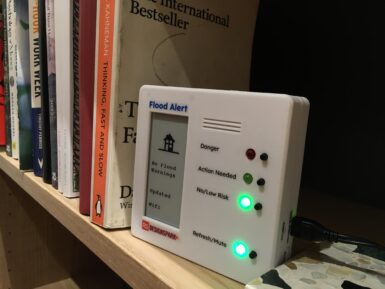
Grove - I2C Hub (6 Port)
Grove - I2C Hub (6 Port) is an I2C expansion interface board, compared with the old Grove - I2C Hub, the same size, two more connectors, almost half the price!
Overview
We've already released the Grove - I2C Hub (4 Port), now comes the 6 port version, the same size, two more connectors, almost half the price!
As you may know, the 7 address length I2C bus allows up to 128 I2C devices to access.
At present, there are over 80 Grove I2C modules in Seeed, however, normally only 1 or 2 Grove I2C connectors are available on the Seeeduino Board or the Grove Base Shield. What if we need to use multi Grove I2C modules in the system? The answer is Grove - I2C Hub (6 Port).
There are 6 Grove connectors in this hub, one input, five output, or you can even connect one hub with another, so that more devices can be plugged in.
Not only I2C but also can be used to control several synchronous change devices (like LEDs).
We did a survey and gathered some feedback about the old Grove I2C Hub (4 Port), many users mentioned that the 4 slots are not sufficient, so we add two more and keep the same 20*40mm size.
SeeedStudio always values the voice of our customers, and we appreciate our customers helping us grow and make us better.
Get Inspired
An IoT Moisture sensor that sends moisture data from an Arduino Nano 33 IoT to the Arduino IoT Cloud

As climate change continues to worsen, events such as heavy rains, hurricanes, and atmospheric rivers have only intensified, and with them, large amounts of flooding that pose serious risks to life and property. Jude Pullen and Pete Milne, therefore, have responded by creating a "physical app" that can show the potential for flood dangers in real-time with sound, lights, and an ePaper display. The Arduino Nano 33 IoT powering the Flood Alert device sources its data from the UK Environmental Agency’s API to get statistics on an area’s latest risk level along with an extended description of what to expect. Initially, the electronics were mounted to a breadboard and housed within a cardboard enclosure, but a later revision moved everything to soldered protoboard, a 3D-printed case, and even added a piezoelectric buzzer to generate audible alerts. For now, the Flood Alert’s sole source of data is the aforementioned API, but Pullen hopes to expand his potential data sources to include “hyper-local” sensors that can all be aggregated and analyzed to give a much more precise view of flooding in a smaller area. To learn more about Flood Alert and its myriad applications to local communities and beyond, check out the original long read article’ is available at DesignSpark.








